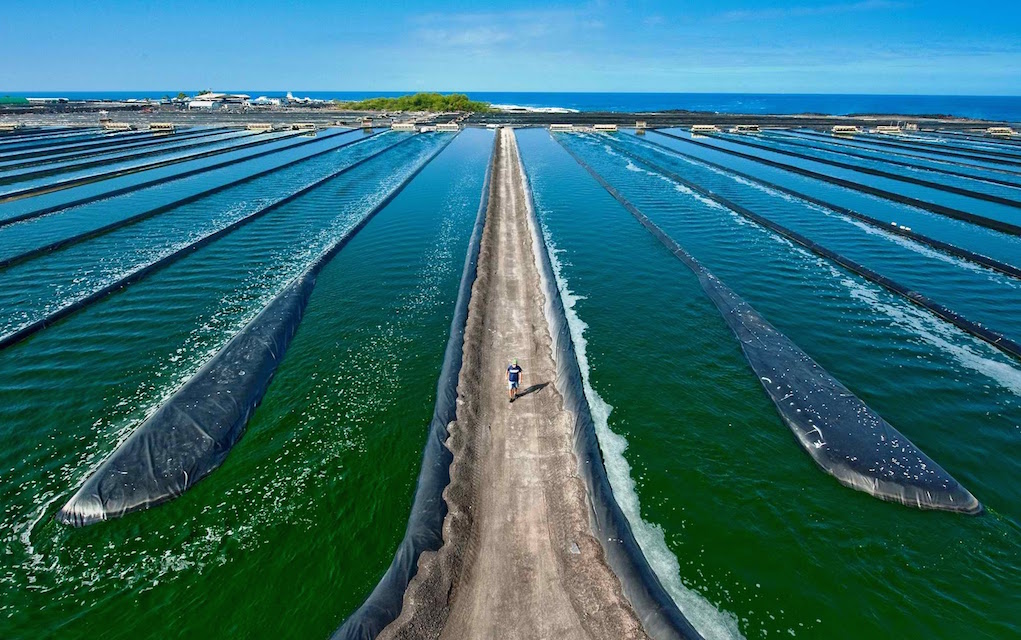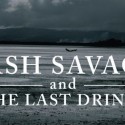The internet is flooded with claims that Spirulina will improve every thing from heart health to your mood. Believers of all things seen as alternative will sing you the gospel on its virtues, but is there a darker side to that deeply green and bad tasting alleged miracle Algae? At the core of this question are a variety of nasty substances called Cyanotoxins. Cyanotoxins are created during certain seasonal Blue Green Algae blooms in both fresh and salt-water environments. Cyanotoxins are not just nasty, they have long been held to be some of the most toxic substances known to man. They have been observed as far back as 1878 when the journal “Nature” published an article detailing the rapid and terrible deaths of Australian wildlife that consumed contaminated water from Murry River estuaries. Cyanotoxins are such a toxic group of substances that they have even gained prominence by the Indian Ministry of defense research and development division as being candidates for biological weapons programs.
Microcystins are among the most lethal of the many known and studied Cyanotoxins. They can cause rapid death via respiratory failure in directly lethal doses, massive liver damage and death in smaller doses and in low but regular doses they are linked to liver and colorectal cancer. There are many well-documented cases all over the world of the deaths of various mammals due to them entering the body. In 1996 a hemodialysis center in Brazil reported that during a three-day period, 101 out of their 124 patients suffered acute liver injury of which 50 died. The resulting investigation discovered that the deaths were a direct result of Microcystin contamination of dialysis water. Needless to say the potential of Blue Green Algae blooms in public drinking water to be contaminated with Microcystins has been a well establish pubic health risk for decades.
Fortunately, ingestion of Microcystins in either concentrated or low but regular forms is unlikely in nature for two reasons. Most mammals refrain from openly consuming and/or drinking obviously contaminated water and Blue Green Algae blooms are a seasonal events, therefor seasonal ingestion of highly diluted Microcystins are as stated, seasonal, giving the body sufficient time to recover from what is essentially a low level environmental stressor. There is however, a possible exception to this general state of nature and that is the industrial concentration and consumption of a Cyanobacterium we commonly refer to as Spirulina.
Upper Klamath Lake in the Northwest United States is one of the most abundant natural sources of Blue Green Algae in the world. Produce harvested is marketed and sold as health supplements such as Spirulina. In 1996 it was found that Upper Klamath Lake in southern Oregon was experiencing what is a quite regular bloom of a toxic variation of Blue Green Algae named Microcystis Aeruginosa. Rightfully so, the Oregon Health Commission issued a general warning to the public about contact and consumption with the water. In light of the fact that many varieties of Blue Green Algae harvested from the lake were being consumed via supplementation the Oregon Health Commission and the Oregon Department of Agriculture established a regulatory limit of 1μg/g (one millionth of a gram) for Microcystins Aeruginosa contamination in Blue Green Algae products.
Subsequently, a study was commissioned testing a variety of products on the market. Of 87 products tested, 85 showed the contamination of Microcystins and of these, 67 (or 72%) showed concentrations above the 1μg/g regulatory limit with some showing results at 10 times that (10.42μg/g). Its worth taking into consideration that the regulatory limit was based on guidelines comparable to the ones for drinking water which was 1μg/L and based on a 2 liter water consumption per day. If one is to look at a random sample of the dosages recommended by Spirulna manufacturers world wide it can be up to 20g per day giving an exposer 20 times this regulatory limit. Even this is highly optimistic, as worse case contamination being 10.42μg/g would represent a 200-fold dose of the toxic contaminant in question if one were to follow some top end recommended dosages.
Of course this is only one example of “naturally” harvested groups of Blue Green Algae supplements. Not all Spirulina supplements are harvested in open environments that have seasonal Algae blooms across a variety of potentially toxic species. A large percentage of Spirulina consumed is produced under conditions that are “theoretically” controlled using purified water and specific cultures to attempt to create mono species environments and the above study shows that the presents of Microcystins in these cultured environments is in fact lower. The reality is however, that unless this is done under 100% laboratory conditions it is near impossible to guarantee. It is generally done in man-made open water environments with full exposer to potentially harmful contaminants in low cost locations such as China and India. What’s more is that Spirulina supplements in many cases around the world lay far outside the regulatory authority of the various government bodies that pharmaceuticals are so highly regulated by and in these cases the industry is left only to regulate its self.
Lets take a general example of an un-named Australian company that markets and sells a Blue Green Algae product under the generic name Spirulina. When questioned via email on the origins and quality practices they provided a loosely put together information sheet and a marketing pamphlet on their product. Reading between the lines it was evident that the product was not in fact manufactured by them and was produced by a variety of manufacturers globally. When pushed further on the quality testing in place they provided a “Certificate of Analysis” made by one of the producers them selves with a clear disclaimer stating, “The information contained herein is, to the best of our knowledge, correct. No guarantee of their accuracy is made and the product is sold without warranty, expressed or implied which extends beyond the description.”
Of even more particular concern is the fact that the “Certificate of Analysis” did not involve any testing regarding the threat of Cyanotoxin contamination. Further attempts were made to source information on the location of production and name of the manufacturer to no avail, with only statements refusing to provide the origins of the manufacture of the product.
The contamination of Blue Green Algae products presents a unique and overlooked way for Cyanotoxins to enter our bodies as opposed to the historically much more publicized risk of through contaminated drinking water. This is compounded by many complex reasons both legal and social. In many countries, supplements such as Spirulina lay outside the framework that pharmaceuticals are regulated by meaning that regulation is left largely to the industry themselves and consumer discretion. Therefor the industry can also be freer to advertise in ways more regulated pharmaceuticals are not. Putting aside the huge list of health benefits claimed and marketed as being the direct result of Spirulina consumption, lets look at the first line of the marketing pamphlet provided by the un-named Australian Spirulina Company, “Imagine a vegetable source with more iron than beef, and more protein than beef and soy (on a gram per gram basis).”
A quick calculation will tell you that to obtain as much protein from Spirulina as a standard T-bone steak will require the ingestion of 400 regular Spirulina tablets. This in turn equates to 200g or most likely your whole bottle. Looked at with an even more skeptical eye it can also represent 200 times the 1μg/g regulatory limit set for ingestion of Microcystins set by the Oregon Health Commission and the Oregon Department of Agriculture in the study mentioned earlier. This is classic Orwellian Double Speak aka, deliberately misleading marketing that slips through a legal loophole of many western nations.
Culturally consumers in many western nations have developed a want to embrace alternative eating habits. It’s obvious this is a growing market and companies happy to avoid regulatory overview are pushing to sell products that can be potentially extremely harmful. Those who are dissatisfied with the state of government recommended dietary guidelines and modern agricultural practices have been focusing too heavily on their dissatisfaction with the establishment to spot the developing problems right under their noses. These are just as sinister and in a somewhat ironic fashion, cloak themselves in alternative dogma.
There is no firm answer on the question of whether Spirulina is, or is not on the whole good or bad for you besides the recondition of the next fact. Whether provided by established drugs and pharmaceuticals firms under heavy regulation or alternative supplementation companies with little or no regulatory oversight, potentially dangerous substances such as Spirulina, need to be viewed with heavy skepticism by the consumer.

























